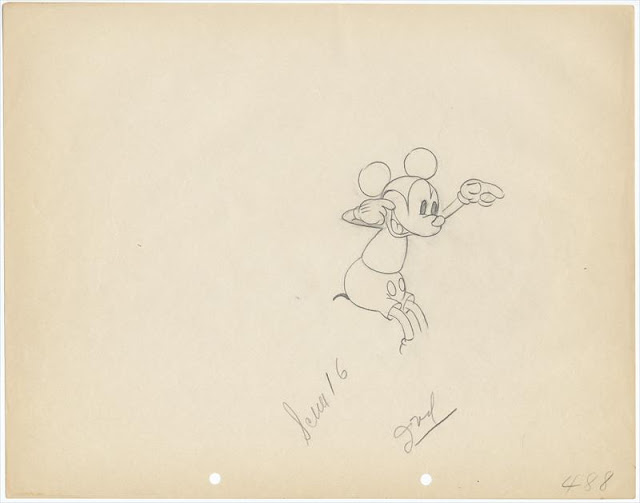WALT DISNEY STUDIO
Orphan's Benefit (1934)
original production animation drawing
pencil on untrimmed animation sheet, image size: 2.5" x 2.25"
Orphan's Benefit (1934)
original production animation drawing
pencil on untrimmed animation sheet, image size: 2.5" x 2.25"
This original final animation drawing of Donald Duck was created by a Disney Studio animator in production of the animated cartoon directed by Burt Gillett, and a cel painting was made directly from it. Donald successfully recites "Mary Had a Little Lamb" but can't get through "Little Boy Blue" without inciting unruly behavior in the assembled youngsters; this drawing is from the opening moments of his third attempt. A color version of Orphan's Benefit directed by Riley Thomson with new animation was released in 1941. The animator wrote the studio designation “4” at lower right to indicate this original's place in the scene.


















































